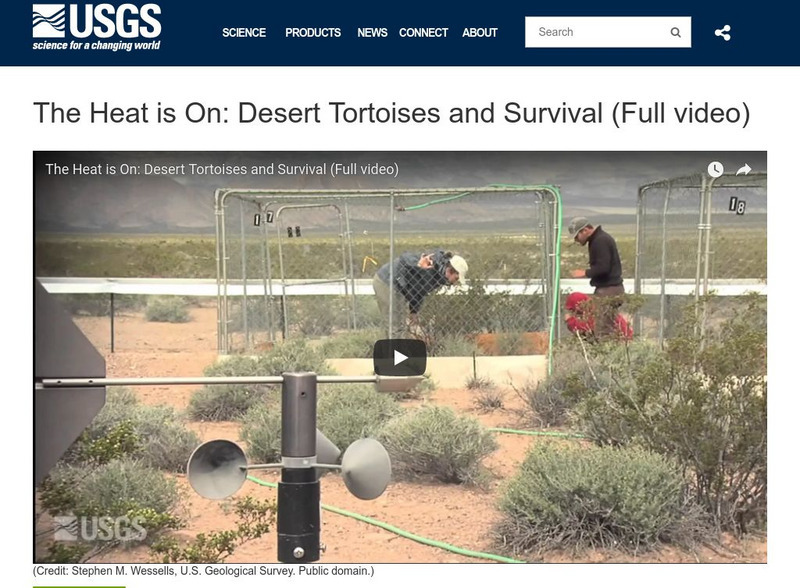Getty Images
Barren seabed as a result of dredgers from the fishing industry, Conakry, Guinea Coastal areas, West Africa
Barren seabed as a result of dredgers from the fishing industry, Conakry, Guinea Coastal areas, West Africa
Getty Images
Old fishing net, Southern Visayas, Philippines
Old fishing net, Southern Visayas, Philippines
Curated Video
The Human Impacts Of Six Months Of War In Ukraine
Newsy's Jason Bellini examines the human impacts of war in the Ukrainian capital of Kiev.
Curated Video
World Bank helps Lebanon prepare request for aid to cope with Syrian conflict
The World Bank is helping Lebanon prepare the ground to request an influx of international aid to offset the high costs of the spillover from the Syrian civil war, President Jim Yong Kim said on Tuesday.
Kim said in an interview that the...
Curated OER
Carbon Cycle and Global Warming
Carbon is all around us, as shown in this cartoon animation. The carbon cycle is portrayed simply and accurately with fun cartoon plants and animals. Use this video in an elementary or junior high class to facilitate your learners'...
TED-Ed
The Survival of the Sea Turtle
Sea turtles face a lot of adversity: storms, predators on land and in the sea, and eggs that don't hatch, but the biggest threat to these magnificent and ancient creatures is human activity. From poaching to pollution, from trash to...
PBS
Pbs Learning Media: On the Yukon River
In this video segment adapted from the Yukon River Panel, visit fishing communities along the Yukon River and see how Alaska Native peoples exercise stewardship of salmon to ensure that it remains a central food source and cultural...
PBS
Pbs Learning Media: Studying the Antarctic Sea Floor
Studying life on the seafloor beneath Antarctica's thick ice is a major challenge for ecologists. Learn about a new device that can reach those icy depths in this video segment adapted from WomenInAntarctica.com. [4:39]
PBS
Pbs Learning Media: Bears' Lunch Counter
This Nature video segment explores how the relationship between humans and grizzly bears has changed over the course of American History, and it describes the closing of the Yellowstone National Park garbage dumps in the 1970s. [4:19]
PBS
Pbs Learning Media: This Is Their Land
Examine how the human/grizzly relationship has changed since the closing of the Yellowstone dumps, and also learn about the challenges posed to both humans and bears, in this video segment from Nature. [4:14]
PBS
Pbs Learning Media: Bear Necessities
This Nature video segment focuses on the four foods most important to the grizzly bears' survival, and it describes the threats to the supply of each of them. [3:56]
Monterey Institute for Technology and Education
National Oceanic and Atmospheric Administration: Ocean Pollution
This learning module explores the effects trash, toxins, oil and sound pollution are having on our oceans. Includes two short videos along with a brief exploration and two interactives. A brief assessment follows each interactive.
CPALMS
Florida State University Cpalms: Florida Students: Measuring Biodiversity to Evaluate Human Impact
A video to learn about the interactions of humans and the environment. Also, learn how the environment is impacted by humans. [4:40]
PBS
Pbs Learning Media: Earth a New Wild: Living With Sumatran Elephants
Students learn how elephants engineer the ecosystem to benefit humans and nature. [5:10]
PBS
Pbs Learning Media: Bears in the Schoolyard
Learn about the precautions humans must take in the face of a growing grizzly bear population in this video from Nature. [3:06]
Smithsonian Institution
National Museum of Natural History: Qrius: Island Biodiversity Tracking Human Influences
How do inhabitants on islands alter the ecosystem over time? An archaeologist will identify specific changes over many years that occurred as a result of human arrival on islands. [29:16]
US Geological Survey
U.s. Geological Survey: Multimedia Gallery: Video: Desert Tortoises and Survival
A four-part series featuring the endangered Mojave Desert Tortoise and investigating the population decline of this species. [0:30]
PBS
Pbs Learning Media: Crash Course Ecology: Pollution
Hank talks about the last major way humans are impacting the environment: pollution. Pollution takes many forms - from the simplest piece of litter to the more complex endocrine distruptors - and ultimately, humans are responsible for it...
PBS
Pbs Learning Media: Crash Course Ecology: 5 Human Impacts on the Environment
Hank gives the run down on the top five ways humans are negatively impacting the environment and having detrimental effects on the valuable ecosystem services which a healthy biosphere provides. [10:37]
PBS
Pbs Learning Media: Oil Contaminants Hidden From View
This video adapted from KTOO explores why the beaches of Latouche Island and Knight Island, Alaska, contain remnants of an oil spill and discusses its resulting impact on the Alutiiq community of Chenega Bay.3m 37s
PBS
Pbs Learning Media: To List or Not to List
In this video from Nature, learn more about the ongoing debate regarding whether or not the grizzly bear population needs special protection. [1:37]
PBS
Pbs Learning Media: Bears Don't Recognize Boundaries
In this video segment from Nature, learn about the problems bears are creating on ranch land surrounding Yellowstone National Park. [3:01]
American Geosciences Institute
American Geosciences Institute: Humans Change Earth
Realize the many ways in which humans affect the Earth system, including other living things on Earth. [4:57]
Sophia Learning
Sophia: Environmental Concepts: Lesson 1
This lesson will define ecology, natural environment, ecosystem, and environmental deficit, while delineating the formula for calculating human impact on the environment. It is 1 of 3 in the series titled "Environmental Concepts."








